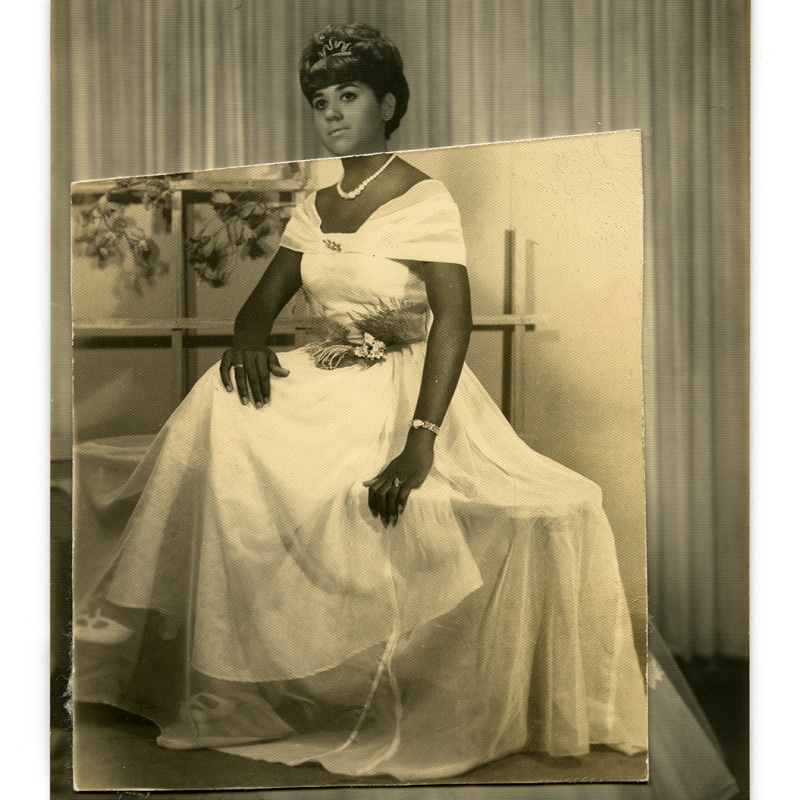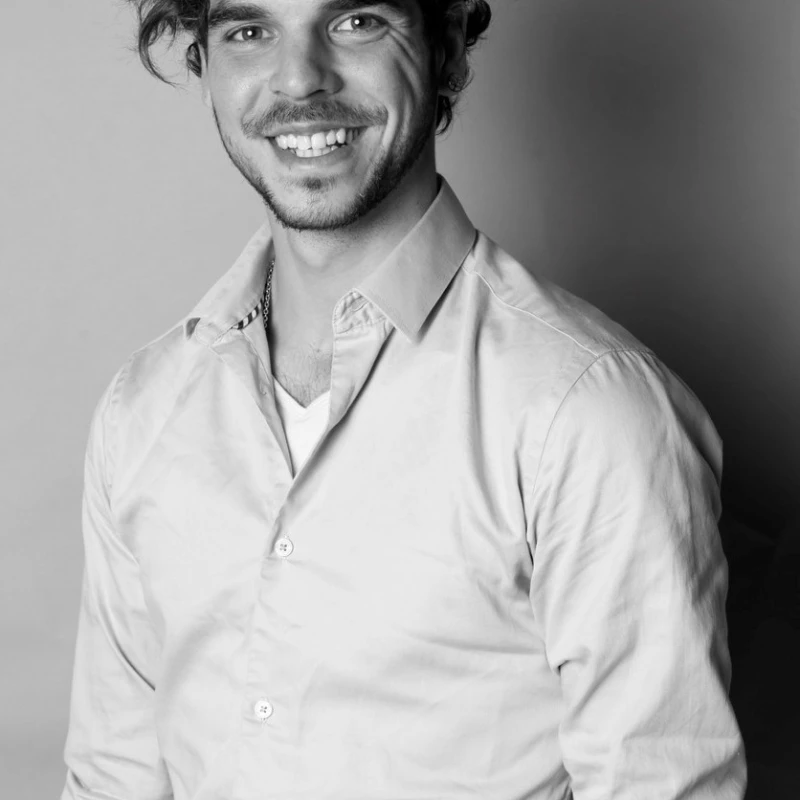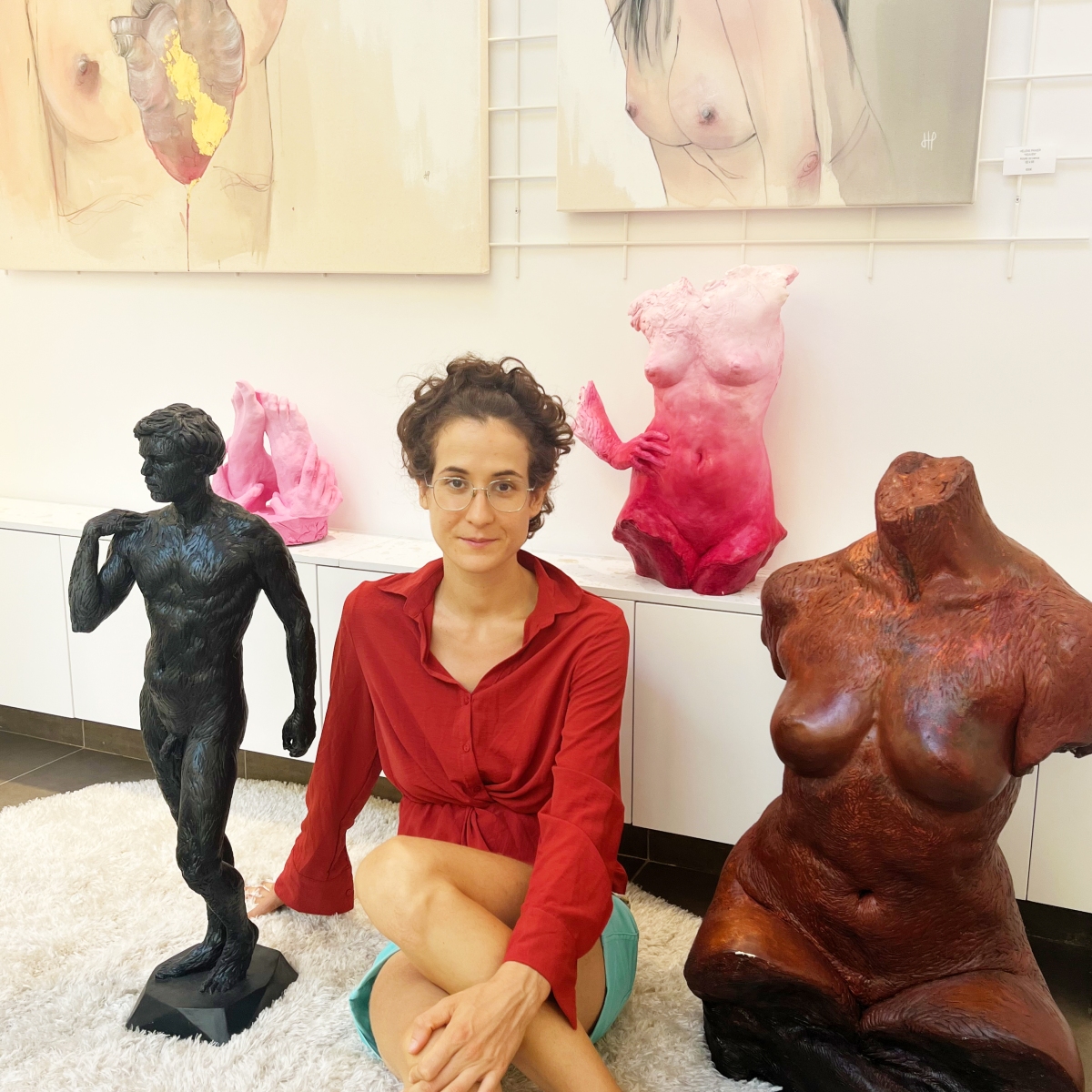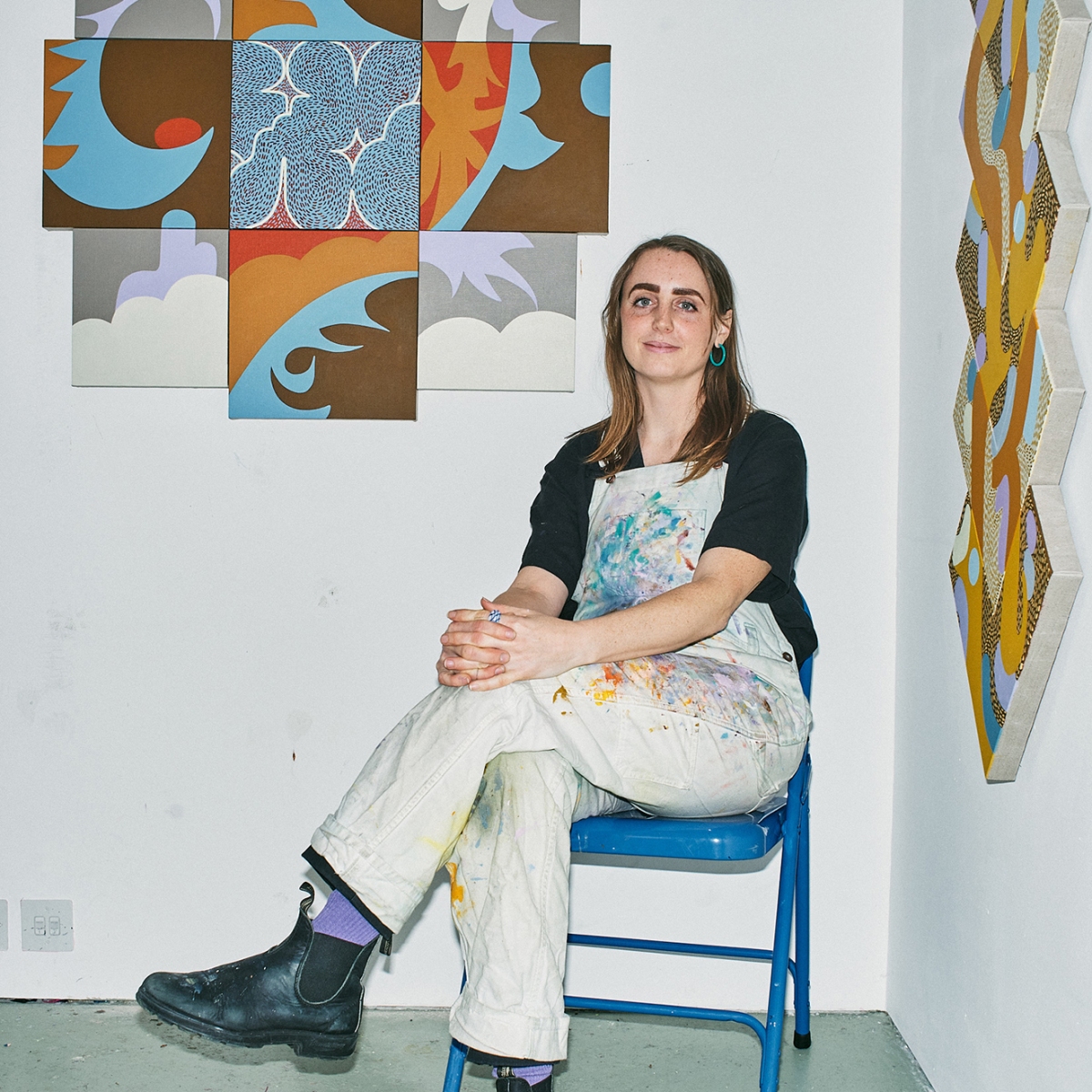Since 2013, Babak Haghi has worked in professional and fine art photography. In his pictures, he discovers and projects his main concerns: the dialect of the body, nature, femininity inside human beings and outbreaks of identity. Since 2013, he’s participated in countless group and solo exhibitions in an outside of Iran, his most recent exhibition being a group show in New York’s High Line Nine Gallery and organized by Engendered, a trans-national arts & human rights organisation with special focus on gender equality.
In our interview, we had the pleasure to speak to Babak about his passion for the human body, the beauty of analog photographs and the difficult situation for artists in Iran.

Digital Photography, 80 x 60 cm
*****
For those who don’t know you, please tell us a bit about yourself and your work. How did you get into art and becoming a photographer?
I was born in 1982 in Tabriz in Iran. Even though I was interested in art since I was a teenager I had always been interested in literature and read a lot of poetry and novels, and “Kafka” is one of my favourite authors, but I am not a good writer! my family was against my becoming an artist and I had to choose the electronics field in the university at the insistence of my family. But after finishing university and military service in 2009, I migrated to Tehran and started my independent life.
Being away from my family and their influence made me focus on my main interest, which is art. I bought a small compact camera and started photographing my surroundings and my body. I studied more and participated in some specialized photography workshops. In 2013, I started photographing theater and performance because I was very interested in theater. But in other years I tried to show something that I liked and was in my thoughts and psyche same as sexual identity, body language, physical performances, nature. And it continues until now. Photography is the most part of my life. It’s something that I discover more and more every day and it makes me hope to continue living with all the restrictions and censorships that exist for artists in Iran.
Art is what I found my liberation in.

Analog Photography, 70 x 70 cm
Reviewing the pictures you sent me, I saw that many are analog photographs. What do you like about analog photography and is there something that you believe that digital photography “misses out on” compared to analog?
I also do digital photography, but digital technology leads us to produce a lot of photos, as well as conflict us with different kinds of brands and their competition. Digital always seeks to update and reach more resolution and clarity, and this speed is so high. When you buy any camera after a year, you think that this camera is outdated and you have to replace it with a newer one. But analog photography gives me the opportunity to meditate, think and focus on objects more.
“No matter how skilled a photographer you are, the “event” plays an important role in analog photography, and this is one of its charms, in my opinion.”

Analog Photography, 70 x 70 cm

Analog Photography, 30 x 30 cm
In photography, I don’t face the photo immediately, and my mind has the opportunity to face the photo taken after a time process and understand the distance between the reality in front me and the photo. Also, from an aesthetic and visual quality point of view, analog photos are more attractive to me, even when I’m shooting with expired films.
In your biography on your website you write: “Photography of performance, dance or any other body art, is my real passion.” Could you please talk a bit about the subject of the human body in your work and why you are so fascinating by it?
Theater director Tadashi Suzuki says: “The body is culture.” I say the body is culture, language and geography. Also, the body expresses identity when it is placed in a safe and trusted environment. When I interact with the performer and the model, we actually reach a common language.
“Photographing any “body” is the discovery of a human being with its own unique complexities. Their body is the screen of their psychological and internal tensions and challenges.”

Analog Photography, 50 x 50 cm

Digital Photography, 70 x 50 cm

Digital Photography, 70 x 50 cm
For me, photographing the body and physical performances and even portraits are studying and getting to know people, as well as getting to know myself and discovering the feelings that incline me to this path and choosing them as models.
Many of your pictures are black and white, some are coloured. What do you like about either of them and is there anything that one offers that the other can’t?
I love black and white photos. I think that despite the growth of digital camera technology in achieving better color quality, black and white photography still retains its charm and influence. But sometimes colors are necessary to complete the content and concept of the photo, and then I present those photos in color.

Digital Photography, 70 x 50 cm

Analog Photography, 80 x 60 cm
You live in Tehran, Iran- could you please talk a little bit about the art scene there?
In Iran, there is a limited artistic space for showing artworks. Most of the art galleries are in Tehran (the capital) and art activities are more limited in other cities. The government monitors exhibitions and there are restrictive laws and censorship. Biennales and international art fairs are not held in Iran, and it is difficult to sell the works of young and emerging artists, but still, many good artists are active and exhibiting their works in Iran. But despite all these problems, many art exhibitions are held in Tehran every week and many audiences visit art galleries. But in the last three months, due to street protests, artistic activities have become very difficult and exhibitions are not held.
Any advice you’d like to share with fellow emerging artists?
I think that if someone loves art and has talent and works hard for it, they can succeed. Especially in the contemporary world, with the existence of online platforms, more democratic spaces have been created to compete and show works of art.
What are you currently working on & is there any upcoming exhibition that you’d like to mention?
Unfortunately, I can’t hold an exhibition due to the current situation in Iran. But recently, three of my artworks were exhibited in New York in High Line Nine Gallery in a group exhibition organized by the Engendered organisation. Currently, I mostly photograph in nature, and I also continue the photography project about identity and the body.
Any fellow (emerging) artists you’d like to recommend?
Yes, sure: Mehrdad Khataei, Morteza Pourhosseini, Alireza Memariani, Soheyl Bastami, Nazli Abbaspour
What are your hopes for the future?
My biggest hope is that I and other Iranian artists can show our artworks in free spaces without censorship and fear, and like the artists of other countries, we can have international financial and artistic exchange. I also hope that internet access without censorship will be possible soon. And finally, I wish no artists in prison anymore!
Get in touch with Babak:
Instagram: @babak.haghi.artworks
www.babak-haghi.ir

***

Do you like Suboart Magazine? Subscribe to our monthly email list for more interviews and news on emerging artists from all over the globe.
Discover more emerging artists
Read more interviews












